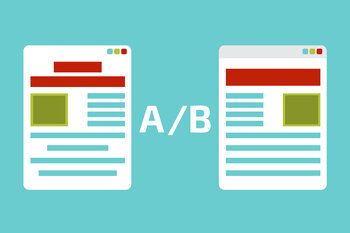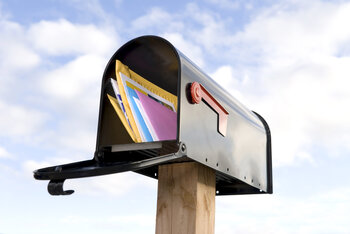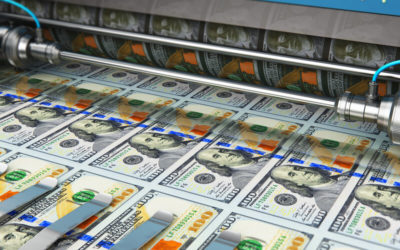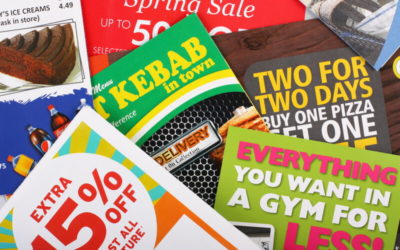You have to go the extra mile to ensure you’re getting the best results for your direct mail campaigns. That’s why your best marketing plan requires the most accurate data for each campaign. Simply put, you want to know what works and what doesn’t. This involves a scientific approach—otherwise known as direct mail testing. Sound complicated? Rest assured, it isn’t. Let’s use a direct mail testing strategy to improve your print marketing campaigns.
Direct Mail Testing = Direct Mail Success
Digital marketing lends itself to deep testing tactics with the abundance of data that’s available for websites, email, and social media. For instance, you can easily A/B test email messages, landing page content, and digital ads with the tap of a button. That’s nice for digital marketing but what about direct mail? If the history of direct mail marketing shows us anything, it’s that various forms of split testing have been around for ages. But that doesn’t mean it’s an antiquated process with printers, mailing houses, perpetual proofs, and endless phone calls. Quite the contrary, in fact. It was never as easy as it is now. With automation and variable data printing, you can seamlessly test different offers, markets, design tactics, and more to achieve your best results in much the same way as you would for digital marketing.
Why is it important? Ultimately, your direct mail success will depend on how well you test your campaigns. Every print marketing campaign you send should include some type of direct mail testing. That way you can check for the data that could be a bottom line difference-maker. With testing, for example, you might:
- Identify a new product or service
- Discover an entirely new market for that product/service
- More accurately segment your mailing lists
To begin, let’s look at the how and what of a direct mail testing strategy:
- How you can apply direct mail testing to your print marketing campaigns.
- What you’re going to test.
Direct Mail Testing: Split Testing

A/B Test
An A/B direct mail testing strategy involves sending two versions of a campaign and measuring how each one performs. You “split” your mailing into two parts and send a different version to each group. The difference is whatever you want it to be (as we’ll discuss shortly): the format, audience, design, offer, etc. Then you look at the results to see the differences. Which one performed better? With this type of testing, always include a unique code or URL for each group so you can easily compare your findings.
Multivariable Test
If you’re comfortable with A/B testing, consider a more complex approach—like a multivariable test. With this approach, you would apply direct mail testing to multiple mailing lists, offers, and formats all in one campaign. For instance, you could divide your list according to certain demographics or shopping behaviors, while at the same time pitting a postcard vs. a standard letter with a discount or free shipping. Those are merely examples. You can break it down any way you want.
Direct Mail Testing: What Do You Want to Evaluate?
This may sound simplistic, but before you can test something, you have to know what you want to test. That means developing a rationale for your direct mail testing strategy. For example, you may be thinking of comparing a postcard mailer to a standard letter/envelope campaign—a very justifiable analysis. After all, both are popular-sized direct mailers. But let’s look at another. Perhaps you’ve already formed an opinion that millennials are more likely to respond to your offer than any other age group. You could test that theory vs. the rest of your list to be sure you’re correct. Another possibility could be the way you design your mail piece: the colors, images, placement of text, personalization, etc. Also, what about your offer? You could provide two incentives with the same value to see which performs better.
Any one of those items could affect your response rates. Direct mail testing will show you which one has the most influence for each category. But keep in mind the work of legendary direct mail expert Ed Mayer and his 40-40-20 rule, which originated back in the mid-1900s. Mayer said that direct mail success depends 40% on the mailing list, another 40% on the offer, and the final 20% on the format, design, and copy. Heed his advice and place your emphasis where it matters most.
Direct Mail Testing: Formats

Postcards
Postcards are a budget-friendly method of sending direct mail and if designed well, they can be a very effective marketing asset. From announcing a new product or service to inviting customers to your retail location, landing page, or event, a postcard is a logical format to test. Some of the most popular sizes are:
- Standard (4.25 x 6)
- Double (8.5 x 12)
- Oversize (9 x 6)
- Jumbo (11 x 6)
Remember, the idea is to stand out from the rest of the mail in people’s mailboxes, so a larger postcard is typically better.
Letter/Envelope
The letter/envelope combo is a classic direct mail format—and one of the most personal. This match gives your brand a logical way to market your product/service to a specific audience or deliver a heartfelt fundraising campaign for nonprofits. A well-written direct mail letter breaks down barriers and develops a personal connection with your customers. Some of the most popular letter sizes include:
- #10 envelope (traditional “business” size).
- Monarch style (often referred to as 7-3/4″ envelopes although the dimensions are actually 3-⅞ x 7-½).
- A-style or announcement (in a variety of sizes ranging from A-2 to A-10).
- A 6 x 9 envelope can hold folded letters plus additional marketing materials inside.
- Large envelopes (aka “flats”) are for direct mailers you don’t want to fold, like magazines or catalogs. These have the best response rates (6.6%), although you will pay more for postage.
MSP houses the W+D 410 Easy Enveloper, which allows us to go from web printing to envelope converting to inserting without missing a beat. This increases our speed to market and reduces direct mail costs. The result: we can quickly produce a wide variety of high-quality envelopes, with or without windows. Plus, the press features inline photopolymer embossing plates to enhance the value of printed envelopes with the latest paper textures. This, in turn, creates the eligibility for a postal discount.
Self-Mailers
Should you want to go a different route than the standard letter/envelope, self-mailers allow you to send a mail piece without the cost of an envelope. You could include a tear-off reply card or coupon as a design element or use a non-traditional folding format like a gatefold, roll fold, or Z-fold.
Catalogs
Direct mail catalogs have always been a great way to boost sales. In fact, ANA studies show that more than 90% of retailers use catalogs and consider them to be essential to their marketing strategy. Catalogs can showcase a variety of products and give consumers the opportunity to look for new items. Modern-day marketers also know that catalogs drive website traffic. According to the Harvard Business Review, response rates from catalogs are up 170%. So be sure to include your website URL (like a landing page) and a QR code or PURL for easy smartphone access.
Dimensional Mailers
If you want to be sure your recipients open your direct mail campaign, send dimensional mailers. Of course, a box, mailing tube, or padded envelope is going to be more expensive to send, but once you’ve identified a highly targeted demographic, it’s well worth the extra money you’ll spend. Dimensional mailers have a nearly 100% open rate (who among us can resist?) with the best response rate of any direct mailer. Plus, this format provides long-lasting value as recipients are more likely to “save and share” the contents with family and friends.
Direct Mail Testing: Mailing Lists

If you’re a financial services marketer, you’re targeting your offer for customers who might want to refinance their car loan with your bank. But you feel the offer might be more suited for individuals who just bought a vehicle. According to Edmunds, the average length of a car loan is 72 months. People generally have to wait to refinance for at least two or three months because most lenders want the title to transfer. Plus, many customers can rebound from a temporary drop in their credit score after six months, so they’d get a better refinancing rate. So in theory, the response should be higher from those who’ve had their loan for less than a year, as opposed to those who have had a loan for more than a year. Those are your two audiences—or test variables. Everything else in the mailing is the same.
Direct Mail Testing: Offers
Regardless of how beautiful your presentation is, it’s the offer that ultimately causes people to respond to your direct mailer—or not. The more valued the offer, the higher your response rate. With direct mail testing, you can try two different offers of equal price to see which one customers consider more valuable. For example, you can assume a discount would produce the best response, but what if you put it up against a free gift offer? You might be surprised at the results, but that’s why you’re testing.
Direct Mail Testing: Design
According to the 40-40-20 rule we mentioned earlier, the design of your direct mail piece doesn’t carry as much weight as the other variables. But that doesn’t mean you should treat it with less concern. After all, the way you present your brand could be the difference between someone opening your direct mailer or throwing it in the trash.
Let MSP Help You with Your Direct Mail Testing Strategy
Whatever type of split test you can dream up, we can advise you and help you carry out your direct mail testing strategy. MSP will help you get your campaigns properly segmented, printed, shipped, and delivered as quickly as possible. Contact MSP for a free consultation today.
How Effective is Direct Mail Marketing?
As a smart marketing professional, you know that direct mail is a wise choice to include in your multichannel arsenal. But exactly how effective is direct mail marketing? We're here to answer that question for you. Direct Mail Marketing Continues to Grow ...
How to Optimize Your Direct Mail Postcards
Marketers from every industry love direct mail postcards because they're affordable and effective ways to advertise their products and services. So we applied our 65+ years of knowledge and came up with a few tricks you can use to boost your results. Here's how to...
Direct Mail Advertising Costs: Here’s What to Look For
Marketers want to know how to get the best return for their advertising dollars. So we assembled the typical direct mail costs to show you what's involved and what options you'll have when it's time to plan your next direct mail campaign. Direct Mail...




